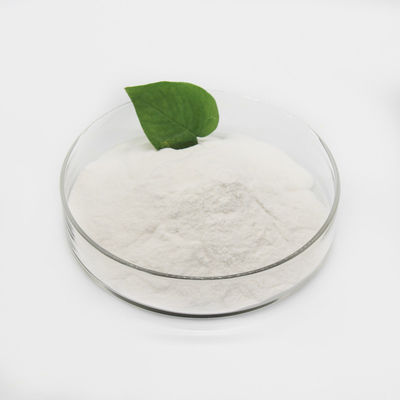Polyacrylamide Powder APAM Anionic Polyacrylamide Powder Water Treatment Chemicals
Product Description
Anionic Polyaluminium chloride due to a certain number of polar groups in its molecular chain, it can bridge particles by absorbing suspended solid particles in the water, or condense particles into large flocculants by neutralizing charge, so it can accelerate the settling of particles in the suspension, obviously accelerate solution clarification, and promote filtration
Specification
| Item |
Anionic |
| Appearance |
White Powder |
| Solid Content(%) |
≥90 |
| Degree of Hydrolysis(%) |
19-23 |
| Insoluble Matter(%) |
≤0.2 |
| Solution Time(min) |
≤40 |
| Residual Monomer(%) |
≤0.05 |
| Effective PH Value |
5-14 |
Application Areas
1.Wastewater treatment of iron and steel plant, electroplating plant, metallurgical wastewater, coal washing wastewater, etc.;
2. Drinking water treatment;
3. Alcohol treatment plant anion polyacrylamide dehydration, pressure filtration recovery;
4. Used for river mud sedimentation;
5. Used for papermaking dry strength agent, auxiliary agent and auxiliary agent;
6. Used in the incense industry


The viscosity of polyacrylamide solution mainly reflects the internal friction resistance between liquid molecules due to flow or relative movement. The internal friction resistance is related to the structure of the polymer, the properties of the solvent, the concentration of the solution, temperature and pressure, etc. The greater its value, the greater the viscosity of the solution.
1, the influence of temperature on the viscosity of polyacrylamide
Temperature is a reflection of the intensity of the irregular thermal movement of molecules. The movement of molecules must overcome the intermolecular interaction force, and the intermolecular interaction, such as intermolecular hydrogen bond, internal friction, diffusion, molecular chain orientation, entanglement, etc., directly affect the size of viscosity, so the viscosity of polymer solution will change with temperature. The influence of temperature change on the viscosity of polymer solution is significant. The viscosity of polyacrylamide solution decreases with the increase of temperature. The reason is that the dispersed phase particles of polymer solution intertwine with each other to form a polymer with a network structure. The higher the temperature, the more easily the network structure is destroyed, so the viscosity decreases.
2, hydrolysis time on the viscosity of polyacrylamide
The viscosity of polyacrylamide solution changes with the prolongation of hydrolysis time. The hydrolysis time is short and the viscosity is small, which may be due to the polymer has not enough time to form a network structure. Hydrolysis time is too long, the viscosity decreases, which is caused by the structure of polyacrylamide in solution. Partially hydrolyzed polyacrylamide in water dissociation into the negatively charged molecules, electrostatic repulsion between the molecules and the same molecular anionic repulsion between different link can cause molecules in solution and extend intertwine between molecules, and this is partially hydrolyzed polyacrylamide can make the solution viscosity increased significantly.
3, the effect of salinity on the viscosity of polyacrylamide
Polyacrylamide molecular chain has more cationic groups than anionic groups, more net charge and greater polarity, while H2O is a polar molecule. According to the principle of similar phase dissolution, polymer water solubility is better and characteristic viscosity is larger; With the increase of mineral content, the positive static charge is surrounded by anions to form ionic atmosphere, which combines with the positive static charge around, and the polarity and viscosity of the polymer solution decrease. Mineral concentration continued to increase, positive and negative ion groups forming intramolecular or intermolecular hydrogen bond association with (resulting in a decline in the solubility of the polymer in water), at the same time, add the salt ions by shielding positive and negative charge, dividing association between positive and negative ions and make the salt has key damage to the polymer in water solubility (enlarged), the two competing with each other, The polymer solution at a higher salt concentration (& GT; At 0.06 mol/L), the viscosity remained small.
4, molecular weight effect on the viscosity of polyacrylamide
The viscosity of polyacrylamide solution increases with the increase of molecular weight of polymer, because the viscosity of polymer solution is produced by the interaction between molecules when molecules move. When the relative molecular mass of the polymer is about 106, the polymer wires begin to infiltrate each other enough to affect the scattering of light. Mechanical entanglement at slightly higher concentrations is sufficient to affect viscosity. At very low concentrations, the polymer solution can be regarded as a network of nodes formed by mechanical entanglement and hydrogen bonds between chains. At higher concentrations, the solution contains many chain-to-chain contacts, giving the polymer solution a gelatinous appearance. Therefore, the higher the relative molecular weight of the polymer, the more easily the chain entanglement between molecules, the greater the viscosity of the solution.

 Your message must be between 20-3,000 characters!
Your message must be between 20-3,000 characters! Please check your E-mail!
Please check your E-mail!  Your message must be between 20-3,000 characters!
Your message must be between 20-3,000 characters! Please check your E-mail!
Please check your E-mail!




